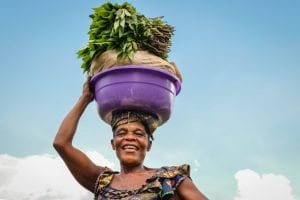The key to understanding Norgaard and York’s paper “Gender Equality and State Environmentalism” is looking at this paper and recognizing that gender equality is quite a ways away so the change that women are able to evoke is still limited to a less than equal playing field. Norgaard and York conseptualize this by detailing how “In 1990, the UN Commission on the Status of Women estimated that for women to influence key outcomes and be taken seriously, a threshold of 30 percent women in Parliament was required” (Norgaard and York 514). But even with this low threshold women are still able to evoke change, Norgaard and York come to the (unproven but highly supported) conclusion that “gender equality and state environmentalism are linked and that an understanding of one may contribute to an understanding of the other” (Norgaard and York 515). Norgaard and York use Norway and Singapore as references because they are both “affluent, developed nations but show strikingly different levels of support for environmental treaties and gender equality” (Norgaard and York 515). Norway serves as the positive, having “one of the highest percentages of women in Parliament in the world at 36.4 percent and ratified 13 of the 16 treaties considered” (Norgaard and York 515). Singapore, on the other hand, represents the negative with women holding “only 4.3 percent of legislatorial positions in Parliament, and Singapore ratified only 4 of the 16 treaties considered” (Norgaard and York 515).
This work by Norgaard and York is parallelled by an article from the United Nations Framework Convention on Climate Change, “Why Women’s Leadership is Key to Climate Action: Political and financial commitment is needed to support the contributions of women and girls at all levels”. Nina Jeffs details throughout the article how necessary female voices are in environmental decision making. Jeffs describes how “Gender-differentiated tasks, including women’s responsibility for most unpaid household labour, and unequal power relations within families and communities, can limit women’s opportunities to participate in local environmental governance” (Jeffs). Jeffs not only exposes a long standing problem globally but also proposes a solution. Jeffs believes that the solution lies in education, “Ensuring access to quality education for girls is also a key pathway for gender parity in climate leadership. Girls’ education can be a force for gender equality in families and communities and is closely associated with a country’s female political representation” (Jeffs). Jeffs builds on this idea describing how “Climate education for girls, including technical environmental training, can increase their resilience and build their capacity to critically engage with climate information and lead climate solutions”(Jeffs). Norgaard and York’s work was confirmed in a 2019 study by Astghik Mavisakalyan and Yashar Tarverdi that came to the conclusion that “ national parliaments with more women pass more stringent climate policies” (Jeffs).
 A woman carries vegetables in Yangole, Democratic Republic of Congo. Despite women’s contribution to achieving climate targets, their access to climate finance remains limited. (Image: Axel Fassio/CIFOR CC BY NC-ND-2.0)
A woman carries vegetables in Yangole, Democratic Republic of Congo. Despite women’s contribution to achieving climate targets, their access to climate finance remains limited. (Image: Axel Fassio/CIFOR CC BY NC-ND-2.0)
https://climatechampions.unfccc.int/why-womens-leadership-is-key-to-climate-action/
Another article that I think dovetails beautifully with Norgaard and York’s paper is from Congresswoman Sylvia Garcia (representing the 29th district of Texas). This article details Congresswoman Garcia’s long and eventful history of supporting the environment for her constituents. Garcia has built her environmental platform on legistlation surrounding climate change, EPA regulations, and marine species protections. Norgaard and York emphasize that more women indicates more environmental reform and Congresswoman Garcia is just one of the many women of color that have earned positions of power and have used those positions and platforms to further environmental reform and change on a legistlative level. Garcia summarizes her standpoint on environmentalism saying that “We must recognize the reality that maintaining long-term economic growth, protecting the jobs our children will hold, and remaining competitive on the global stage, requires making investments today in the clean energy technology of tomorrow” (“Energy & Environment | Representative Sylvia Garcia”).
https://sylviagarcia.house.gov/issues/energy
“UNFCCC research found that men spoke 74% of the time in plenary meetings between May and June last year” (Jeffs). The United Nations Framework Convention on Climate Change presented this statistic that parallels the statistic presented by Norgaard and York describing how “In 1990, the UN Commission on the Status of Women estimated that for women to influence key outcomes and be taken seriously, a threshold of 30 percent women in Parliament was required” (Norgaard and York 514). With women making up “on average of one third” of the “employees of environmental ministries” we can further see how women in leadership roles do make an impact and that impact is growing with time and resources funneling into supporting female education.

Hi Liz!
After reading your blog post this week, a lot of what you stated stood out to me. I thought that discussing how affluent countries such as Norway and Singapore and how they differ are important to consider when it comes to women in Parliament and the number of treaties that were ratified. We can learn and get information by looking at developed nations such as Norway and how they have more women in Parliament and a higher percentage of treaties ratified and considered. I also liked how you compared the Norgaard and York article to the article by Nina Jeffs which reiterates that women’s voices regarding environmental policies are essential. I thought that your statistic at the end of your blog was really powerful. This reminded me of a quote from the Norgaard and York reading which states, “Gendered divisions of labor, land and other resources have meant that women have been uniquely and disproportionately affected by ecological destruction” which enforces the fact that women are more affected by climate change and therefore should be in these leadership roles to insight both change and work towards equality (Norgaard, York 507).